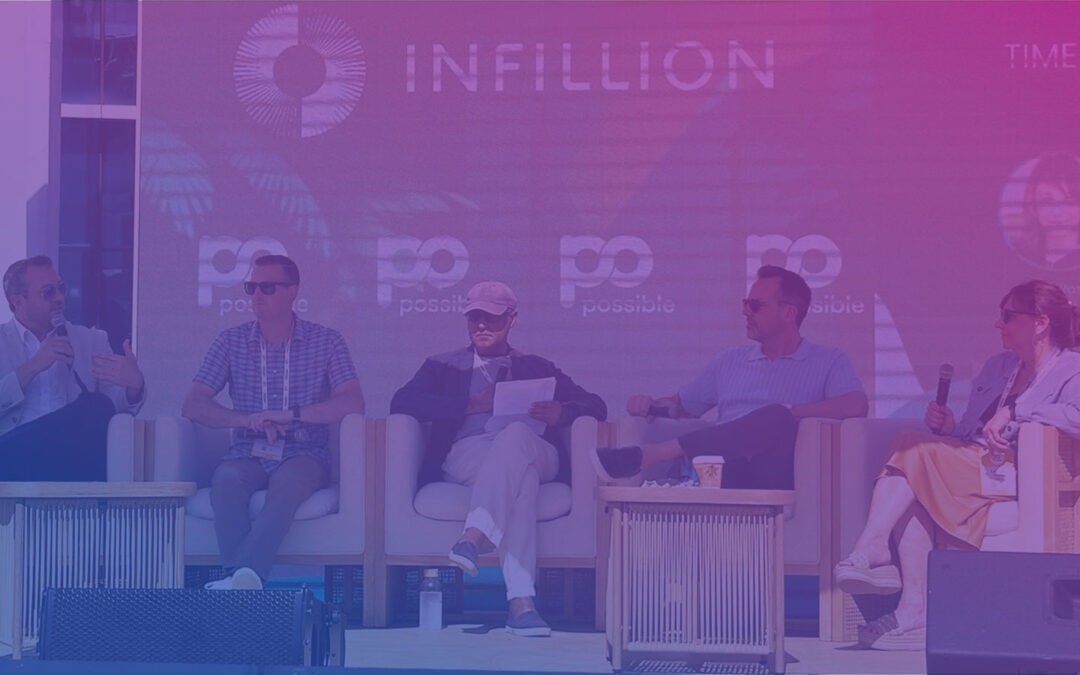Where Creative & Tech Meet Scale: Charting the Course for “CTV 2.0″

Connected TV was the “next big thing” in video advertising for years – and then when COVID-19 hit and people were suddenly spending more time at home, CTV became the current big thing in video advertising seemingly overnight. Market research firms had to adjust their forecasts; ad agencies scrambled to reconcile the siloing of digital and video budgets. In many ways, the advertising world was just trying to keep up to a radical shift in consumer behavior.
Now, a few years later, CTV is here to stay as the primary form of video consumption for millions of Americans. So what’s the next set of priorities for CTV advertising? At Cannes Lions, Infillion president Christa Carone and Beachfront CEO Chris Maccaro took on this subject in a conversation moderated by Conor McKenna, partner at LUMA Partners.
Democratizing Access to TV
For one, the streaming rush isn’t over. “We’re talking to new streamers every single day, and most are coming to market with advertising,” Carone said. “And this reminds me so much of the early days of digital media, by the way – when all of a sudden we had this proliferation of digital media sites that were going to unseat the big publishers in town. That never really happened, and we’re seeing what’s happening in that universe as we speak.”
CTV doesn’t just mean an explosion of viewing options, though – it also means an explosion of potential for advertisers. “We often talk about the dichotomy of CBS versus Facebook – CBS has 200 advertisers and Facebook has 12 million,” moderator Conor McKenna said. “Ideally with CTV, you’ve got a longer tail because you can target a much smaller group, and it can democratize TV advertising to much smaller brands.”
Chris Maccaro concurred. “We see tens of thousands of brands on our platform every month, so certainly an expanded footprint of advertisers are able to take advantage of TV. I think what drives that is the ability to not have to commit large dollars to test the platform anymore. So that’s eliminating a huge barrier for many.” He added that the biggest advertisers are still dominating, so there’s still room for improvement in the opportunities on CTV for smaller brands.
The other factor that had kept smaller advertisers off traditional TV is that they couldn’t afford the production costs of premium video. That’s changed. “It was expensive to produce anything for video,” Christa Carone said. “Technology has certainly enabled a much more efficient approach to creative production. So any of us right now could have a spot through programmatic channels and through just literally using our iPhone, we could put a commercial on the air in the next half hour.”
But not all small advertisers are aware that CTV is open to them – which is why it’s a priority for players in the space to provide clear, transparent outreach.
The Rise of Retail Media and Privacy Regulations
It’s clear that there’s been a rush of both consumers and advertisers to CTV. But there’s nevertheless a lot still to be sorted out, in no small part because of forthcoming changes to privacy regulations and changes to third-party data collection. One of the big topics on the panel – and at Cannes Lions in general – was the rise of retail media and the first-party data that it can unlock. “Commerce media and CTV are the two areas where I spend the most amount of my time,” Conor McKenna said. “No matter what, those [first-party] data signals become much more critical in a world where cookies are going away, IP addresses may be going away, and therefore closeup attribution is key.”
With Beachfront positioned on the supply side of the advertising equation, that priority is clear. “We’re engaging in a lot of discussions around data fidelity and how we get that first party data that sits in that retail media ecosystem,” Maccaro said, “How do we create those direct high-fidelity signals back to them, to be able to really leverage the power of that first party data?”
The panelists noted that, with Cannes Lions in France – and hence subject to European Union data privacy laws – there was a stark difference in their media consumption experience compared to in the U.S. Back home, Christa Carone noted, there seems to be a holding pattern as to how advertisers will address inevitable new privacy laws. “It’s kind of interesting that we’re all waiting to see what the regs will be,” she said. “But if we’re really putting the consumer first and respecting their privacy, can we use measures like a value exchange in order to have that opt-in experience? We’ve done research that has indicated that actually, consumers are willing to share more about them if it means in exchange, they’re getting a much more relevant experience.”
Carone continued that it’s a behavior pattern that consumers are used to. “We’re doing that every day in our Amazon shopping. We’re doing that anytime we’re on Spotify and they’re recommending a new playlist or new songs for us to listen to,” she said. “So we’re willing to give up a fair amount if the brands, the platforms, the content providers are giving us something in return. And to me, that will just continue to be the future state of privacy protection. It’s more of a privacy-forward way to be building a business. Put the consumer’s needs first, and offer an opt-in approach.”
The COVID streaming boom was something that the ad industry didn’t have the luxury of anticipating. But with the next big shake-ups – in tech advancements from better targeting to easier premium creative, and in the response to privacy regulations and norms – the industry has more time to get ready. And the opportunities will continue to grow. As Chris Maccaro said, “There’s still $60-plus billion sitting in linear TV today that is largely untargeted.”
Subscribe to our blog:
Related Posts:

Why Retail Media Is at an Inflection Point
It was no surprise to attendees of the POSSIBLE conference in Miami that retail media networks (RMNs) were going to be one of the hottest topics at the event. Walmart Connect, Target’s Roundel network, Albertsons Media Collective, Instacart, and CVS Media Exchange...

Today’s Biggest B2B Marketer Challenges
Let’s say you’re trying to sell enterprise software to CTOs. How do you get your brand in front of them outside of cold pitches and industry conference sponsorships? Could you even run your creative during football games? Until recently, you couldn’t. But now that’s...

The 5 Biggest Trends at POSSIBLE 2024
Infillion spent the past week at POSSIBLE, a brand-new advertising conference – only in its second year – that took over the Fontainebleau Hotel in Miami. With a focus on brands and the tech companies that are transforming their marketing strategies, the conversations...
Let's Connect
We can help you create the personalized ad experiences viewers expect.

